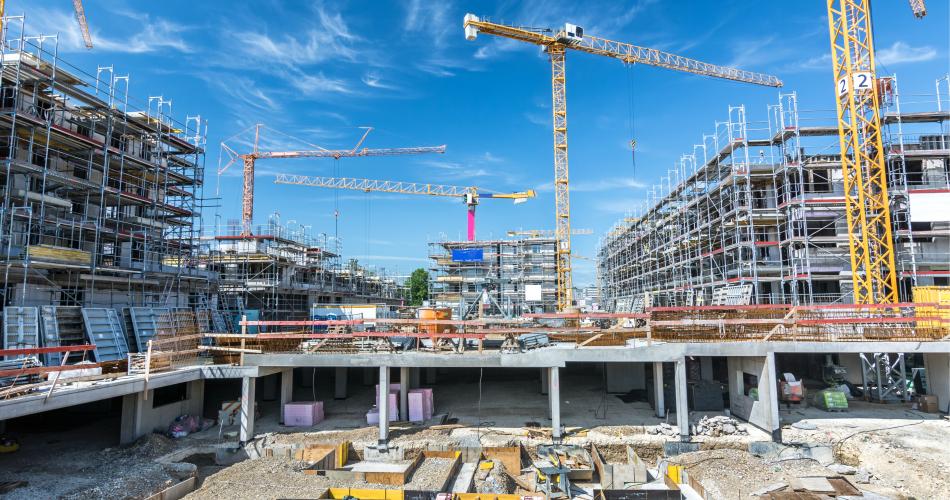Reading time: 7 minutes
The labor market, public health, and the overall economy have experienced unprecedented loss because of COVID-19; all three have a direct nexus with housing. As the country starts to emerge from the immediate public health crisis and subsequent economic crisis associated with COVID-19 – and to be clear, this crisis is far from over – improving our approach to housing will be key to a sustainable recovery.
Prior to the first outbreaks of COVID-19, Up for Growth was focused on policies that will build the thriving and sustainable communities needed for our future growth. Underlying this mission was our research that found that from 2000 -2015, the United States failed to produce the 7.3-million homes needed to keep up with demand. Not only does this shortage make housing harder to find and more expensive, but it prevents the economy from reaching its full potential – economists Hsieh and Moretti determined that the misalignment of housing with jobs in economic centers cost led to an approximately $2 trillion loss in gross domestic product.
The “accessible growth” scenario outlined in our research determined that building the 7.3-million houses America needs to make up its shortfall would increase baseline GDP by a total of $2.3 trillion over a 20-year period. This scenario focuses on increasing the production of a variety of housing types, particularly missing middle and midrise, to vacant and underutilized development sites in transit corridors and near jobs. Meeting housing needs through this approach would also have significant environmental benefits and boost tax revenues.
Of course, before we can think about building for the future, steps must be taken to prevent the housing crisis from getting worse as the COVID-19 crisis continues to ravage the country.
Just today, Senate Banking Committee Ranking Member Sherrod Brown, House Financial Services Committee Chairwoman Maxine Waters, and Congressman Denny Heck are introducing the Emergency Rental Assistance and Rental Market Stabilization Act in both the House and the Senate. This legislation would provide up to $100 billion in direct rental assistance to those hit hardest by the current economic downturn. It is similar to the Emergency Rental Assistance Act introduced by Denny Heck in March, on which we have written extensively. A direct investment in rental assistance is needed to keep people in their homes, to give landlords and property owners essential cashflow, and to prevent the country from entering another devastating financial crisis.
Legislation like this is critical for short-term stability, but when things return to something approaching normal, we should not be OK with going back to the status quo. Our new normal should mean a new approach to housing.
So how do we get there? To be clear, there is no silver bullet. And as we have said previously, it will take actions at all levels of government to solve the housing crisis and to build communities in a way that serves all people. We encourage you to read about some of the positive reforms occurring around the country in an Insights Report from earlier this year. Increasing zoned capacity through statewide legislation. Density bonuses. Legalizing accessory dwelling units and missing middle. Incentivizing affordable and mixed-use housing. Streamlining the approval process. Appropriately aligning impact fees. Encouraging transit-oriented development. These are all proven reforms that were taking hold in the pre-COVID-19 environment and expanding them is critical for recovery.
At the federal level, the Yes In My Backyard Act passed the House of Representatives just prior to the point at which Congress turned all of its attention to responding to COVID-19. The legislation, which would promote the local pro-housing policies that many locations are already enacting, should continue its rapid move through Congress once it returns to its regular business. The Build More Housing Near Transit Act would make housing a bigger priority in federal transit awards, ensuring that precious transit investments lead to needed housing development. The Affordable Housing Credit Improvement Act would boost the country’s lagging investments in needed affordable housing.
These are but a few of the federal proposals that would go a long way in building the housing needed for recovery, and the housing needed for a sustainable tomorrow. They are also reforms that will spur the housing sector, creating jobs on construction sites and along the vast housing supply chain.
Though fully solving housing will require a financial investment, many of these reforms require little government expenditure – rather, they make it easier to build both affordable and market-rate housing. In an era when the federal government is forced to spend trillions to prevent the economy from falling off a cliff, meaningful reforms that have a low price tag are certainly welcome.
Housing was vital to an equitable future before COVID-19, and it is even more essential now. When the immediate crisis abates and we can once again start thinking about tomorrow, let’s ensure that housing is a key part of the recovery.
